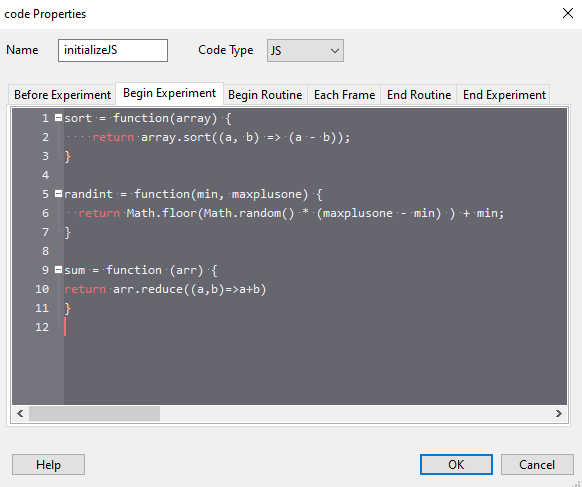

Make sure the stop property is left empty and that it ends the routine when the participant presses the return key (i.e., use “return” for Allowed keys). When enabled (the default), it will end the current routine and move on to the next whenever one of the allowed keys is pressed, which is exactly what we want for our instruction routine!Īdd a keyboard component to the instruction routine. The property Store correct is not relevant, here, so we’ll ignore that for now.Īnother important property, especially in our current use case, is the Force end of Routine option. In addition to some standard properties (like name, start, and stop), the keyboard component also has the property Allowed keys, which specifies which keys are recorded and affect this component, and Store, which specifies which of the potentially multiple key presses should be saved. To implement this, we’ll need to add a keyboard component. As mentioned, we’d like to continue the experiment if the participant pressed the return key. This is highlighted in the routine pane by the bar corresponding to the component extending beyond the time axis. The effect of leaving the stop property empty is that you, technically, create a component with an infinite duration. Give the component a sensible name, keep the letter height at the default (0.1), and leave the stop property empty. Importantly, you need to respond to the COLOR of the word and you need to ignore the actual word. In this experiment, you will see words (either “green” or “red”) in different colors (also either “green” or “red”). A finished Stroop experiment is available under solutions/week_2/Builder/stroop.psyexp, but we highly recommend that you first try to complete the exercises without peaking at the solution! Along the way, we explain several PsychoPy features, which you will practice with in ToDos. Using the Builder interface, we are going to create a simple color-word Stroop experiment, including instructions, with two conditions: congruent (trials in which the text color matches the word, e.g., red) and incongruent (trials in which the text color is different from the word, e.g., red). If you are not familiar with the Stroop task, check out the video below! Creating a Builder experiment from scratch (tutorial) #Īlright, now let’s get to the interesting part: actually creating experiments! In this tutorial, we will guide you through creating a “Stroop task”, step by step.


 0 kommentar(er)
0 kommentar(er)
